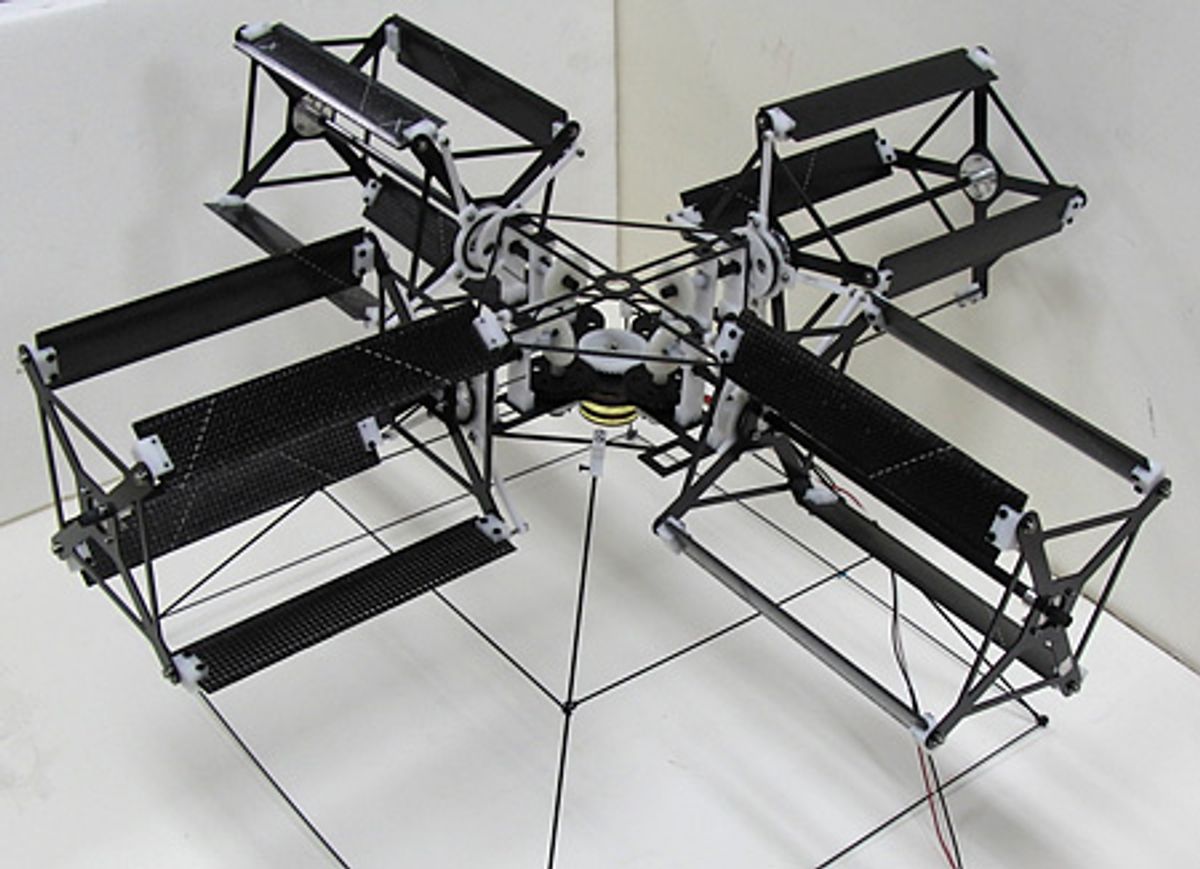Micro Air Vehicles (MAVs) are way, way more useful if they can hover. Hovering capability allows MAVs to operate indoors, and to make it happen, you have to rely on platform like a helicopter (or a quadrotor) or something more exotic. This thing definitely falls into the “more exotic” category—it’s called a cyclogyro, or cyclocopter.
Fundamentally, a cyclocopter is similar to a helicopter in that it creates lift through rapidly moving airfoils. Unlike a helicopter, a cyclocopter’s airfoils rotate around a horizontal axis, continually changing their pitch in order to generate thrust in one single direction:
It’s certainly not a simple system, which is why this idea (which has been around in the form of various prototypes for nearly a century) only got off the ground to make a first untethered flight just recently, thanks to a lot of hard work from Moble Benedict and his team at the University of Maryland. They’ve been developing a cycloidal rotor system made of carbon fiber and titanium that’s so far been applied to both a quad cyclocopter and a twin cyclocopter, and they’ve successfully gotten the two rotor version (with a supplemental tail rotor) into an untethered and more or less stable hover:
You’re probably wondering what the advantages of such a complex system are, and luckily, there are a few. Primarily, it's suggested that a cyclocopter would be more efficient than a helicopter, able to generate more thrust for a given amount of power. It’s also thought that cyclocopters will prove to be more maneuverable, since the thrust can be vectored very rapidly. On the downside, you’ve got the overall complexity of the system to deal with, and the weight of the rotors might cancel out any efficiency gains.
There are definitely a lot of questions about the feasibility of a design like this, but in order to figure it out, the best thing to do is just build them and see what happens, and from the sound of things, the UMD team is finally cashing in on about a century worth of speculation.
Evan Ackerman is a senior editor at IEEE Spectrum. Since 2007, he has written over 6,000 articles on robotics and technology. He has a degree in Martian geology and is excellent at playing bagpipes.




